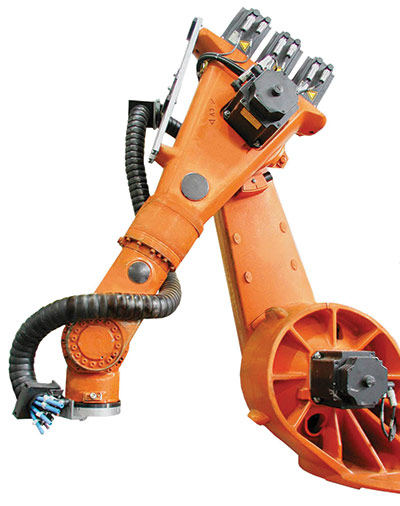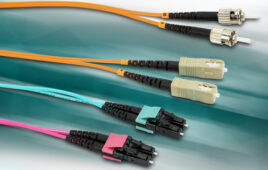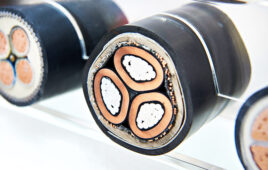
Contributed by Jody Muelaner
Good cable management is vital to the accurate and reliable operation of an industrial robot. Cables that catch and snag will affect the accuracy of a robot. Over time they will result in unplanned maintenance and excessive downtime. Robotic cell integrators have identified cable issues as the most significant cause of downtime.
While standard chain-link style cable carriers can only bend in a single plane, multi-flex cable carriers can be bent in any direction. The simplest construction for a multi-flex cable carrier is a corrugated tube. Available as flexible conduit, these tubes provide a low cost way to protect cables and hoses while flexibly routing them in any direction. However, for the smooth drag-free motion and robust cable protection required on industrial robots, a more sophisticated approach is required. Typically, ridged circular segments are joined into an articulated round chain that can flex in any direction. This approach provides a smooth predictable motion with little resistance to bending until a hard limit is reached at which point there is a very robust protection against bending beyond the minimum bend radius.

Several methods are used to construct articulated multi-flex cable carriers. Some designs use a flexible central spine which supports rings held on spokes. This creates an open cable carrier, with the gaps between the rings providing easy access to cables. The bend is limited by contact being made between the rings. Another approach is to use segments with partial spherical surfaces which are articulated with each joint forming a spherical joint.
When installing cable carriers on a six-axis robot, it’s best to consider the robot in three segments. This allows the cables to move with the robot, preventing tangling, snagging and corkscrewing. The first segment wraps around the base of the robot, allowing the first axis to rotate. This segment should use a multi-axis reverse-bend cable carrier, terminated in a junction box on the second axis. A modular multi-axis cable carrier should then be used between the second and third axis, with a junction box on the third axis. The final cable carrier then runs through to another junction box at the end effector. Strain-relief cables should be used throughout.
Filed Under: Wire & Cable Tips




